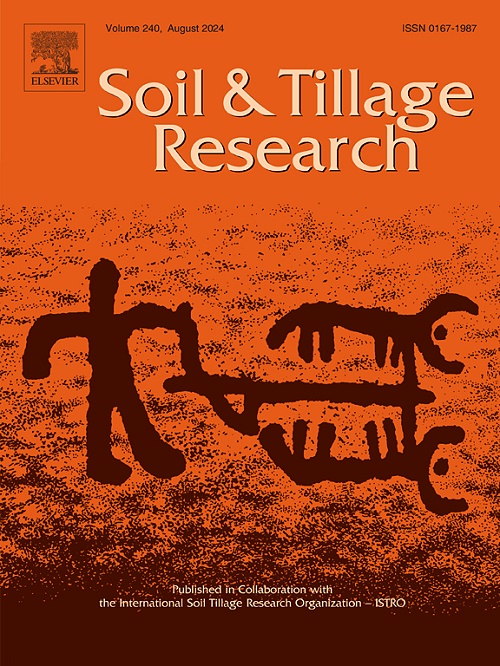Spatial distributions, driving factors, and threshold effects of soil organic carbon stocks in the Tibetan Plateau
IF 6.1
1区 农林科学
Q1 SOIL SCIENCE
引用次数: 0
Abstract
The Tibetan Plateau (TP), known as the “Earth's Third Pole”, has a fragile ecological environment, and is sensitive to global changes, which can easily lead to fluctuations of soil organic carbon (SOC). The spatial variations of soil organic carbon stocks (SOCS), and their driving factors in TP remain unclear. Here. we used quantile regression forest (QRF) model to map soil organic carbon density (SOCD) in TP at 90 m spatial resolution, and estimated the spatial uncertainty of the mapping. Generalized additive model (GAM) was used to analyze the nonlinear responses of SOCD to the driving factors. The results showed that the QRF model can explain about 32 %–51 % of SOCD variation, and the explanatory power decreased with increasing depth. The SOCD decreased gradually from southeast to northwest, and showed a decreasing trend with increasing depth. The SOCS of 0–100 cm soil was 37.26 Pg C of the entire TP, where the grassland occupied 54.59 % of the total stock. Vegetation and land surface temperature were important environmental covariates at all depths. SOCD has obvious nonlinear responses and threshold effects on temperature (MAAT), precipitation (MAP) and aridity (1–AI). The results are of great significance for understanding the status of SOC sequestration, and the response of SOCS in TP to climate conditions.
求助全文
约1分钟内获得全文
求助全文
来源期刊

Soil & Tillage Research
农林科学-土壤科学
CiteScore
13.00
自引率
6.20%
发文量
266
审稿时长
5 months
期刊介绍:
Soil & Tillage Research examines the physical, chemical and biological changes in the soil caused by tillage and field traffic. Manuscripts will be considered on aspects of soil science, physics, technology, mechanization and applied engineering for a sustainable balance among productivity, environmental quality and profitability. The following are examples of suitable topics within the scope of the journal of Soil and Tillage Research:
The agricultural and biosystems engineering associated with tillage (including no-tillage, reduced-tillage and direct drilling), irrigation and drainage, crops and crop rotations, fertilization, rehabilitation of mine spoils and processes used to modify soils. Soil change effects on establishment and yield of crops, growth of plants and roots, structure and erosion of soil, cycling of carbon and nutrients, greenhouse gas emissions, leaching, runoff and other processes that affect environmental quality. Characterization or modeling of tillage and field traffic responses, soil, climate, or topographic effects, soil deformation processes, tillage tools, traction devices, energy requirements, economics, surface and subsurface water quality effects, tillage effects on weed, pest and disease control, and their interactions.
 求助内容:
求助内容: 应助结果提醒方式:
应助结果提醒方式:


